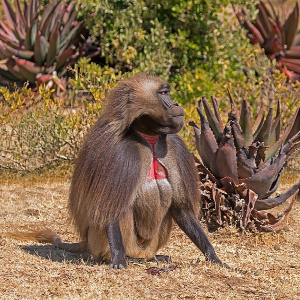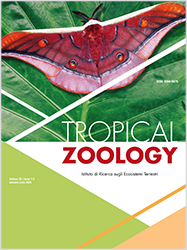Population estimation and activity budget of the endemic gelada (Theropithecus gelada obscurus) in the North Wollo Highlands, Ethiopia

All claims expressed in this article are solely those of the authors and do not necessarily represent those of their affiliated organizations, or those of the publisher, the editors and the reviewers. Any product that may be evaluated in this article or claim that may be made by its manufacturer is not guaranteed or endorsed by the publisher.
Authors
Gelada (Theropithecus gelada) is the only extant species in the genus Theropithecus that is endemic to the Ethiopian highlands. At present, three subspecies of geladas, namely the northern, central, and southern subspecies, are recognized. This study focused on the central gelada subspecies (T. g. obscurus). We documented the population size estimate and activity budget of geladas in the North Wollo Highlands, Ethiopia, from January 2019 to August 2019 during the dry and wet seasons. The study site was divided into four blocks and a simultaneous total count method within each block was used for data collection to estimate the population size of geladas. Activity budget data were collected using the instantaneous scan sampling method from two groups of geladas. The population size of geladas varied between the dry and the wet seasons with more individuals counted during the wet season. Mean group sizes of geladas were also higher during the wet season than the dry season. Geladas spent relatively more time foraging compared to other activities. The findings of the study provide important implications for conservation and thus by briefly mentioning the potential threats to the endemic gelada population could further emphasize the urgency of conservation efforts.
How to Cite

This work is licensed under a Creative Commons Attribution-NonCommercial 4.0 International License.
PAGEPress has chosen to apply the Creative Commons Attribution NonCommercial 4.0 International License (CC BY-NC 4.0) to all manuscripts to be published.







